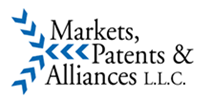If you have a provisional patent application pending on your invention, you have one year to assess the production / distribution / marketing costs versus the potential profitability of your idea, before filing a nonprovisional patent application. If that sounds like a pretty big to-do list to complete in a year, it definitely is.
Holding a provisional patent application pending, but failing to file a nonprovisional patent application by the one year deadline, assumes you have abandoned your invention, you lose the right to that filing date, and could potentially lose ownership rights to the invention. This outcome is fine if you have done your research and determined that the invention isn’t a viable business. It’s not fine if you haven’t completed all of your research prior to the deadline. Unfortunately extensions are not possible.
As you conduct research to determine the commercial viability of your invention, you will want to spend a lot of time qualifying the professionals you will be hiring to complete their role during this information-gathering phase. I have some trusted resources I can provide as a starting point, but don’t assume that everyone you meet is the right fit to assess your invention.
Keep in mind that every step of this process meant to compile data to determine if you have a profitable business idea. That is the unanswered question you need to resolve before the one year deadline. Are there enough potential customers in the market, who are capable of paying the cost per piece to produce the product, as well as generate a profit for you, to make it worth your while to pursue this further?
To produce a prototype, you will need to hire a design engineer who is capable of bringing your invention to life. Based on my experience, I strongly recommend that you put a written agreement in place stating that they will sign over any rights to their contributions to your invention, to avoid additional complications down the road. Additionally, you will investigate potential manufacturing facilities and evaluate the costs associated with each. I give my clients referrals to these professionals as well to start their research.
The next question at this phase is funding to commercialize your invention. Many inventors have chosen to go the crowdfunding route, but not many know that different sites have different policies about the types of inventions those sites will allow. Also this is definitely a place where the adage “it takes money to make money,” kicks in. If you’re asking potential donors to support your cause, you’ll need high quality, compelling video or photos, good copywriting to describe your invention, in addition to various donor incentives based on the level of their pledge. Crowdfunding can be highly effective and give you insight into what you hope to be the anticipated demand for the product. I have followed this trend very closely and can provide substantial guidance to maximize this valuable resource.
Which raises the next point, what is the market demand for what you’re looking to produce, and how much are people willing to pay for it? A crowdfunding campaign can give you a much better sense of consumer interest and a potential price point, but keep in mind that it represents only sliver of the population that has become interested in crowdfunding campaigns. If you end up manufacturing your product, where and how are you expecting it to be distributed? Is there a large enough demand to support long term production? Working with a market research company can give you additional insight into the long term potential.
What I tell my clients is that if you’re looking to eventually make millions with your product, you should plan to spend millions on determining the product’s safety, marketing and product development over the same time period. As your product moves through each level of production—scaling up from 100 to 10,000 to 100,000, and so on, you’ll do additional product development to accommodate the scale of production. And out of that additional product development will come additional opportunities for patents.
Once you have done this research and are satisfied that this product is in demand in the market, and the price minus production costs will yield a healthy profit for you, you are ready to file a nonprovisional patent application. I work with my clients throughout the year to ensure that we provide all of the necessary documentation by the deadline and also do an incredibly thorough search of prior art of other patent applications. The cost can range from $8K for a simple invention with protection in the United States, to $20K for a complex invention requiring an international PCT application. After the application has been reviewed by a patent examiner at the US Patent Office you will have an issued patent.




